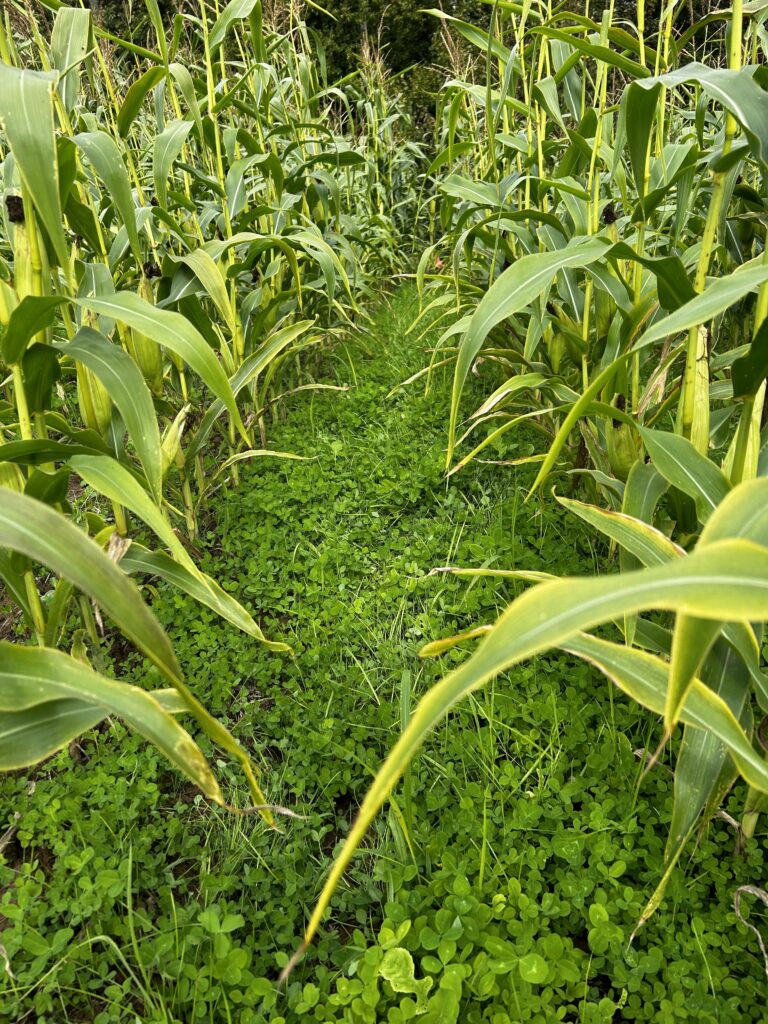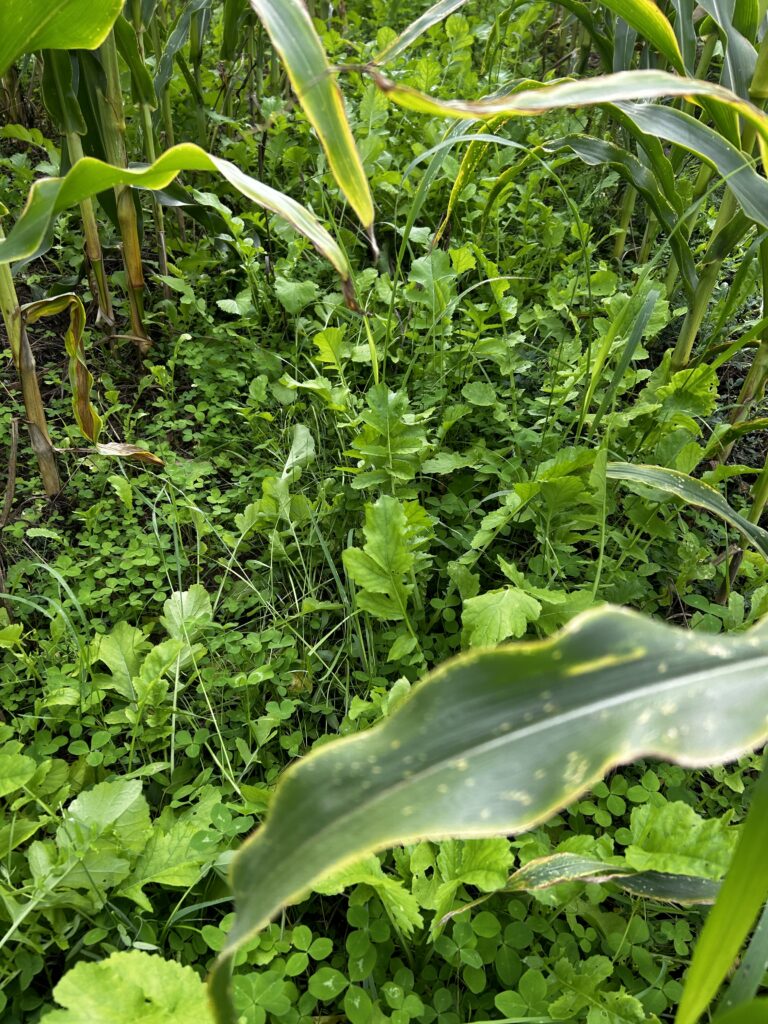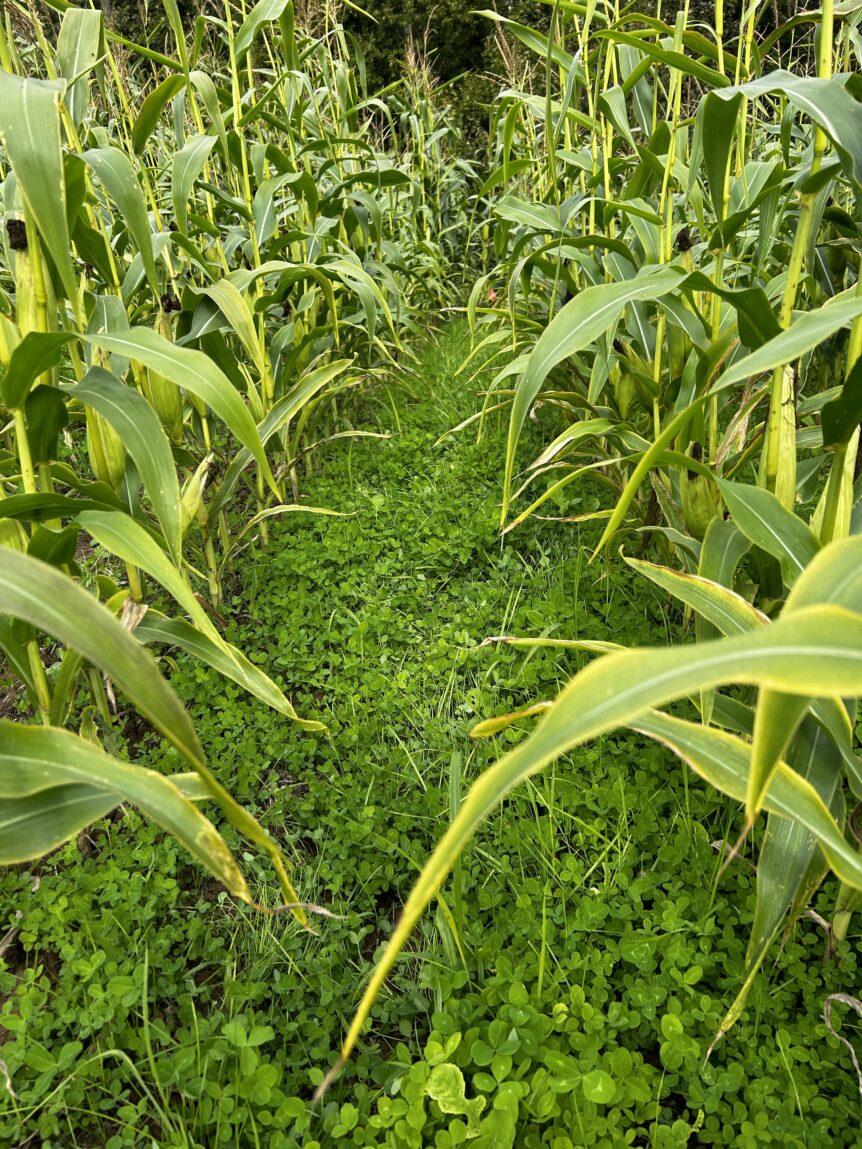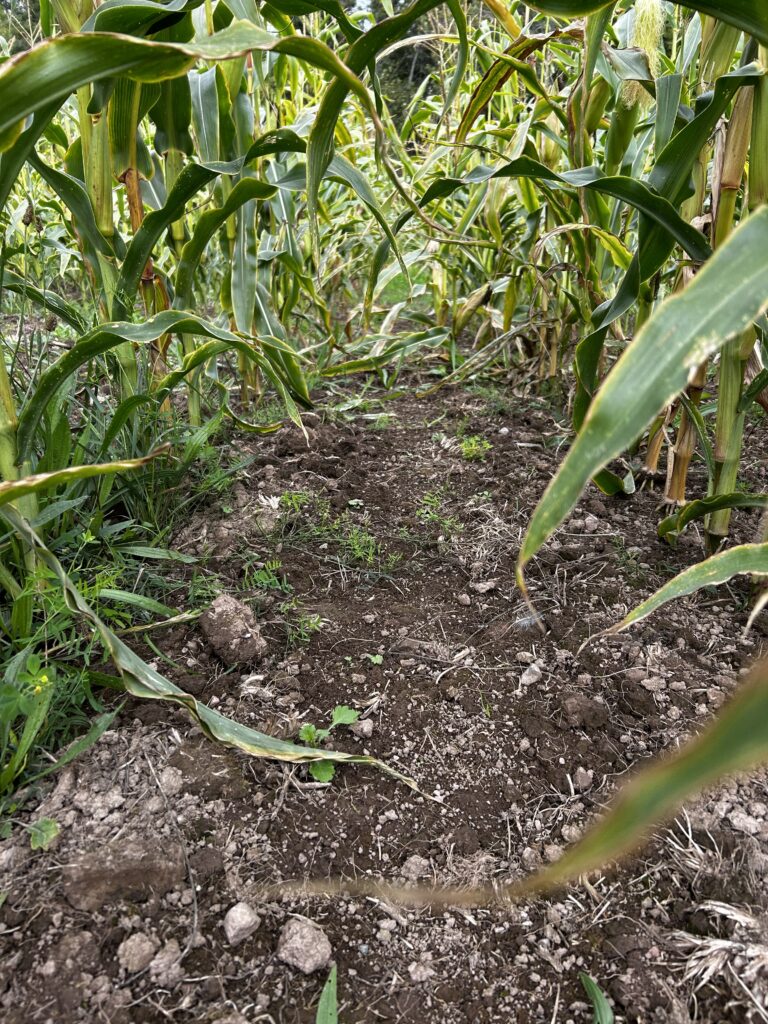This project investigated the potential of interseeding early cover crops into silage corn in northern Ontario, where conventional cover crops are often limited due to the short growing season and colder temperatures.
The study focused on evaluating two different seed mixes and three different seeding methods for their effects on ground coverage, weed pressure, and yield. One of the main reasons we chose to conduct this research project was to show all the environmental benefits that could come with cover cropping. We hoped to demonstrate the easiest and most cost-effective way of cover cropping with corn, in hopes that more producers would be willing to give cover cropping a try.
Seeding Mix
Seed mixes included double cut red clover and annual ryegrass (Mix 1) and a combination of double cut red clover, annual ryegrass, and tillage radish (Mix 2).
Seeding methods consisted of broadcasting, a modified grain drill, and a modified no-till drill. By modifying the grain and no till drill, we removed the discs that would run over top of the corn rows. Ensuring that the seed was only planted between the rows and that the corn was not damaged.
On May 21st, 2023 the corn was planted and at the V4-V7 stage (July 3rd), interseeding was conducted using the three seeding methods for each seed mix. Corn was harvested on September 24th, and the underseeded crop was allowed to grow for the remainder of the season. Plots were monitored for weed pressure and progress throughout the season.
Results The final outcome indicated a 90-95% increase in ground coverage within the corn rows where the cover crop was planted. In comparison, control plots exhibited evident bare ground and weed pressure. The broadcasted and no-till seeding approaches demonstrated the most substantial cover crop yield. To address this, the broadcasted seed was applied at a 20% higher rate, and the no-till drill, with better seed-to-soil contact, yielded the most favorable results. Corn yields were average for the area suggesting the planting of the cover crop had no effect on yield.
For producers concerned about soil erosion, water retention, and related issues, this presents a promising option, provided they have the necessary time and equipment. As this method does require a second pass on the corn (at the V4-V7 stage), but since the broadcasted cover crop did just as well as the no till drill, modifying equipment may not be necessary.




